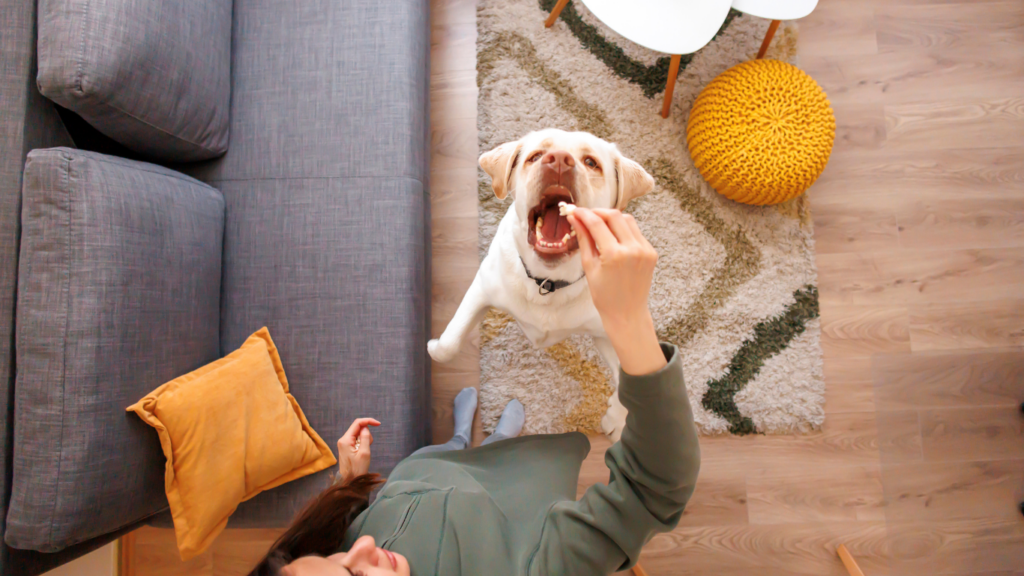Understanding the Importance of a Routine for Pets
Creating a predictable daily routine helps pets feel secure and content. Consistency meets their instinctual needs and strengthens the bond between pet and owner.
Benefits for Behavioral Health
- Routine reduces anxiety in pets.
- Consistent schedules offer pets a sense of predictability (e.g., knowing when to expect meals and walks).
- Reduced anxiety leads to fewer behavioral issues like excessive barking or destructive chewing.
- Training also becomes easier when pets know what to expect.
- Pets are more likely to follow commands when they understand the timing of daily events.
Physical Health Advantages
Daily routines promote better physical health. Regular feeding times aid digestion and prevent overeating. Scheduled exercise keeps pets physically active and maintains a healthy weight.
For instance, a daily walk at the same time each day ensures consistent physical activity. Regular grooming routines, like brushing fur or cleaning teeth, improve pets’ overall hygiene and well-being.
Key Elements of a Daily Pet Routine
A well-structured daily routine for pets includes several essential components. Understanding these key elements ensures pets maintain optimal health and happiness.
Feeding Times
Regular feeding times are crucial for pets’ digestion and overall well-being. Feed pets at the same time each day to create a sense of predictability.
Split meals into portions; for example, dogs often benefit from two meals, one in the morning and one in the evening, while cats may prefer smaller, more frequent meals. Use high-quality food suited to the pet’s breed, age, and health needs.
Exercise and Play Sessions
Daily exercise and play are vital for pets’ physical and mental health. Schedule exercise sessions that match the pet’s energy levels.
For instance, dogs require walks and playtime, like fetch sessions or agility training, while cats benefit from interactive toys and climbing structures. Ensure each session lasts at least 30 minutes to an hour, and adjust based on the pet’s age and health.
Sleep and Rest Periods
Consistent sleep and rest periods are important for recovery and relaxation. Create a calm, comfortable sleeping environment away from loud noises and disturbances.
Allow pets to sleep and rest after meals and play sessions. For example, puppies and kittens may need up to 18 hours of sleep, while adult cats and dogs typically require 12 to 14 hours per day. Monitor the pet’s rest patterns to ensure they are getting enough restorative sleep.
Adapting the Routine for Different Types of Pets

Creating daily routines for pets requires adapting activities to match their specific needs. Dogs, cats, and small pets have unique requirements.
Routines for Dogs
Dogs thrive on consistency. I ensure regular feeding times, typically twice a day, to support their digestion and energy levels. Daily walks and play sessions cater to their exercise needs and help prevent obesity.
Mental stimulation activities, like puzzle toys, keep them engaged. Scheduled grooming maintains their hygiene.
Routines for Cats
Cats prefer predictable environments. I schedule feeding times, often twice a day, to suit their dietary habits. Interactive play sessions with toys mimic hunting and help expend energy.
Providing climbing structures and scratching posts satisfies their natural behaviors. Regular litter box cleaning ensures a clean living space.
Special Considerations for Small Pets
Small pets like rabbits or hamsters benefit from routines too. I offer consistent feeding times with appropriate portions. Daily exercise outside their cages, like supervised play in a safe area, supports their physical health.
Enrichment activities, such as tunnels and chew toys, keep them mentally stimulated. Frequent cage cleaning maintains a hygienic habitat.
By tailoring routines to the specific needs of dogs, cats, and small pets, I can enhance their well-being and strengthen our bond.
Tips for Maintaining and Adjusting the Routine
Pets thrive on consistency but adjusting the routine based on their needs ensures their well-being. Observing their behavior and making necessary changes prevent stress and boredom.
Monitoring Your Pet’s Response
I observe my pet’s behavior to gauge how they’re responding to the routine. Signs like:
- enthusiasm during playtime
- regular appetite
- calmness
indicate success
Conversely, changes in behavior, such as lethargy or anxiety, might mean adjustments are needed. For example, if my dog shows restlessness, I consider increasing the duration or intensity of exercise.
If my cat seems disinterested in play, I introduce new toys or activities to keep her engaged. Regular vet check-ups also help me ensure the routine supports my pet’s health.
Flexibility in Routine Planning
I maintain a flexible approach to the routine to accommodate my pet’s evolving needs. This flexibility is crucial for adapting to life changes like moving or new family members.
For instance, if I change jobs and my schedule shifts, I adjust feeding and exercise times to match the new routine.
Seasonal changes also require adjustments; during winter, I might shorten outdoor activities and focus on stimulating indoor games. This flexibility ensures my pet’s routine remains effective and supportive, regardless of external changes.


